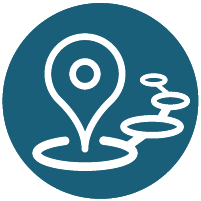Little Digital Artists: Exploring Museums with the Magic of AI
,
HBGCC - Posters, Table 24
Session description
Outline
Content and engagement: AI and VR Tools for Early Learners, Personalized Learning Experiences, Immersive Learning: Virtual Museum Tours and Conclusion & Takeaways
Time: 40 minutes
I'll use peer-to-peer interaction and device-based activities
Supporting research
Wright, S. (2010). Understanding Creativity in Early Childhood: Meaning-Making and Children's Drawing. SAGE Publications.
Vecchi, V. (2010). Art and Creativity in Reggio Emilia: Exploring the Role and Potential of Ateliers in Early Childhood Education. Routledge.
Papert, S. (1993). The Children’s Machine: Rethinking School in the Age of the Computer. Basic Books.
Lindgren, R. & Johnson-Glenberg, M. (2013). "Emboldened by Embodiment: Six Precepts for Research on Embodied Learning and Mixed Reality," Educational Researcher, 42(8), pp. 445-452.
Luckin, R. (2018). Machine Learning and Human Intelligence: The Future of Education for the 21st Century. UCL Institute of Education Press.
Castañeda, L. & Selwyn, N. (2020). Learning for a Digital Future: Critical Approaches to Educational Technology.Routledge.
Hooper-Greenhill, E. (2007). Museums and Education: Purpose, Pedagogy, Performance. Routledge.
Parry, R. (2007). Recoding the Museum: Digital Heritage and the Technologies of Change. Routledge.
Presenters

Session specifications
Topic:
Grade level:
Audience:
Attendee devices:
Attendee device specification:
Tablet: iOS
Subject area:
ISTE Standards:
Innovative Designer
- Select and use digital tools to plan and manage a design process that considers design constraints and calculated risks.
- Develop, test and refine prototypes as part of a cyclical design process.
- Contribute constructively to project teams, assuming various roles and responsibilities to work effectively toward a common goal.
TLPs:
Additional detail:
| Related exhibitors: | Canva Education |

 Back
Back Trips and Tours
Trips and Tours